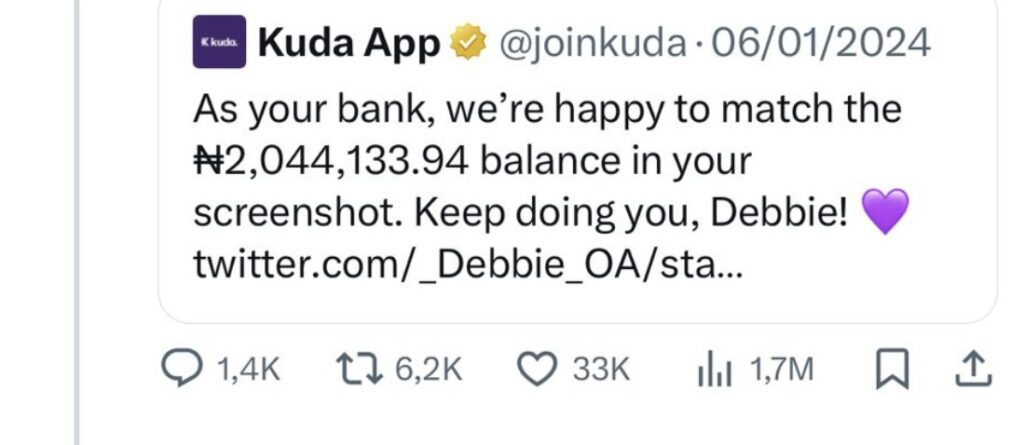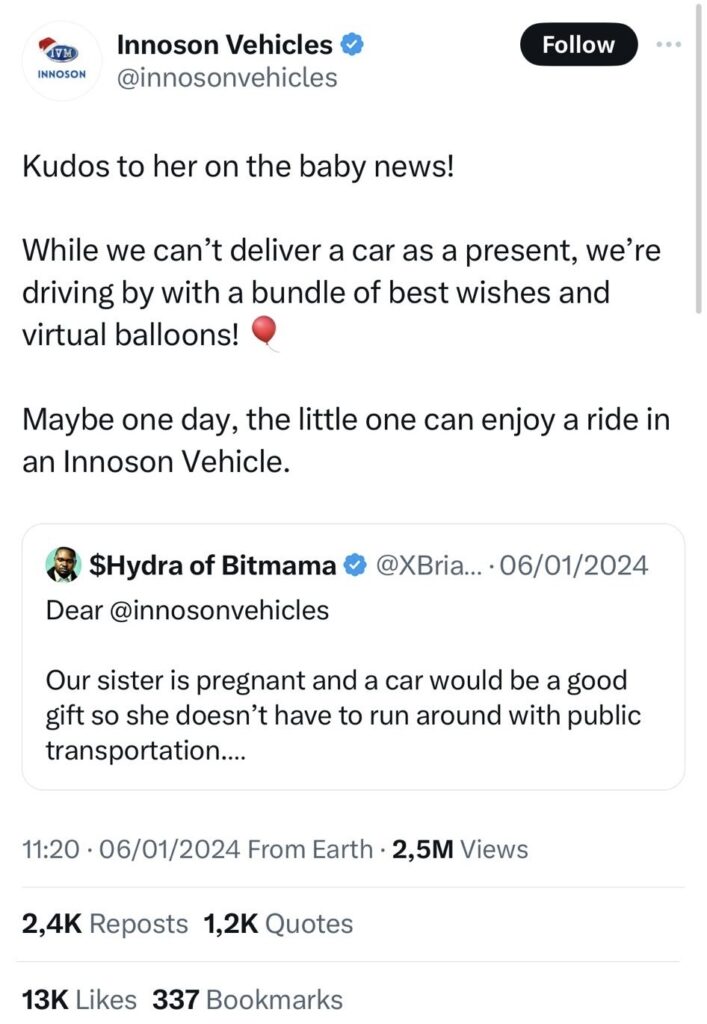Terver: Hello world! Long time no impolite banter
Didi: Hello. It’s been a year! Wow….our last post was in 2022???
Terver: Not to throw stones but somebody hasn’t been available *looks deadpan at Didi*
Didi: Lmao. I can explain
Terver: I’m thankful that you didn’t break into an “I’m unavailable” dance routine. But tbh guys, it’s easier for a camel to pass the eye of a needle than it is to get Didi on a call
Didi: Again, I can explain. My phone screen broke, and that’s because you threw stones.
Terver: Of course! I’m almost tempted to say we owe the people an apology. But, I also haven’t seen anyone ask “Where are Terver and Didi,” so I’m not sure. Meanwhile, they’re sewing threads on X (Twitter) for our mates on BBNaija
Didi: Still, we know deep down you missed us, so, really xri about that.
Terver: Xri? You don’t even own a TikTok account! There’s no justification for this
Didi: I own Facebook. Close enough .
Terver: You might be the only one who still checks their Facebook. But moving on from Millennial business, what are we talking about today Didi?
Didi: Resisting the need for validation from strangers at the expense of your brand’s goals.
Terver: Ahhh right! This is one of those themes that comes around every six working days: a viral moment happens and brands fall over themselves to “tap into” the moment. Last year, it was Hilda Baci and I distinctly remember (among other gaffes), a fintech brand jumping in to offer her a trip to the Maldives.
Didi: Yeah! That was honestly a very confusing moment for me. Trying to find the correlation between their offering and that trip.
The most recent case was that of a lady on Nigerian Twitter who was showered with money after she had somewhat been attacked for waking up early to cook for her husband.
Because she was the star of the moment, and her posts were getting millions of views, people started clamoring for brands to gift her. Our conversation today will revolve around: If and when brands should tap into such moments.
Terver: Ahahn, our conversation will revolve, wow, wow…fancy! It’s interesting how a ‘4:50 am cooking wife’ controversy can spark a marketing frenzy. I’d say that in theory, hopping on a social media moment in itself is smart. It shows your brand is agile, you can use it to land a powerful thematic message and that can have a snowball effect on improving top of mind awareness, engagement and brand love. The problem however is that the practice of things is rarely ever as simple as its theory and most brands miss a lot more than they hit.
Didi: And “missing” after you spend money on a campaign is not how we do over here, so we’ll be telling you how to think about it, and importantly, what not to do.
The first step is to ask yourself if your brand stands to gain anything from the goodwill.
I use the word “brand” here, because it could be an improvement in the perception of your solution, or a product benefit, where you acquire more customers; but there has to be some form of benefit.
Terver: Agreed! This might be controversial, but I think the laws of diminishing returns have set in for brands participating in social media moments. In the Mumzee case, brands were almost bullied into jumping on that trend. That being said, there are only 3 things that should matter in deciding whether your brand should be jumping on a social media trend. Thing one is timing, thing two is tone and thing 3 is audience match.
At least 2 of these boxes must be ticked or else, it’s okay (and highly advised) to sit it out
Didi: How do you know it’s the right time, Terver?
Terver: The golden rule is the earlier the better. Social trends are often faddish, meaning they quite literally fade quickly. If your brand needs multiple approval layers, or complicated internal sign-off routes, you’re gonna be hopping on the wagon when the bandwagon effect has fully set in and then you become “one of the many brands” to be doing it. Poor ROI left, right and center.
Didi: Mumzee’s case was pretty interesting. Lasted over a week. But statistically, the news cycle is 48 hours. 72 hours if you’ve really lucked out.
Terver: Yup! If you’re going to join a trend, try to join in the first 48 hours.
Didi: Tone sounds pretty connected to audience-match to me. Terver, would you like to speak about it?
Terver: Bribe me!
Didi: *Bribed*
Terver: Tone and audience match are pretty connected, but they’re not quite the same. Audience match begs the question “does my buying audience care about this topic?” while tone asks “how is this conversation adding to my wider narrative?.” There’s a reason Rihanna turned down Cheap Thrills. Can’t be asking everyone to better have your money and at the same time singing “I don’t need dollar bills to have fun.” If you’ll have to bend your brand tone too far from its typical storyline, remember that “no” is a complete sentence.
Didi: Rihanna turned down Cheap Thrills? I’m currently singing “Under my cheap thriller, ella ella eh eh eh,” but I think that’s the wrong song.
Terver: Lemaoooo! On a separate note, it’s interesting to see the difference in returns between small and big brands. For small brands, it’s a bigger investment because they’re quite literally investing their widows mite, but smaller brands barely see a jump in awareness from these efforts. It’s just “one virtual card brand got her verified, one shoe brand got her and her family slippers”
Didi: Lmao…True. Statistically again, the brands who benefit the most from advertising are the most popular brands. This is the equivalent of the rich getting richer in advertising.
Terver: And it’s easy to see why. A big brand is already identifiable, so your brain is doing one take and it registers. For the smaller brand, it’s likely your first time identifying it, and data says you have to see an ad about 7 times before you notice it.
Didi: For example, if Mastercard gave MumZee money, we would remember. Until then, it’s “one virtual card brand”.
Terver: Absolutely right! I think Kuda is one of the few brands that actually benefited from this, I have heard their name mentioned in more post trend reviews than any other brand.

Didi: NNPC was off. Like reallyyyyy off.
Terver: I mean if your brand archetype is a ruler, what business do you have in a trending post about a woman waking up to cook at 3am???
Didi: Wow wow. But she rules the kitchen? (In the words of whatever creative justified this in the group chat)
Terver: All types of double jeopardy! Seriously guys if you take nothing away from this– joining a trend just because you can (or worse, have been asked to) is a recipe for dull content.
And that brings us to the third point: do you have a ready audience that’s invested in this “trend”? Or even better, is your actual buying audience the same audience that is invested in this trend?
Didi: In most cases the answer is no and It’s a waste of resources, because people remember the trend, not the brands participating
Terver: If I could gift brand managers a frame, it will say “Trends are for users to have fun, not for brands to obsessively attempt to capitalize on reach”
Okay…. that’s a pretty long windy message, but you get my point!
Didi: That’s something I’ve been thinking about. Infinix replaced MumZee’s phone because she was using an older version; but until this conversation, I really didn’t remember.
Okay, maybe I’m not the audience, and I’ll never use that phone; but I really didn’t see them in the conversation.
Also, you make a strong point on what really happens during trends. People move on. Infinix missed the chance to structure their engagement in such a way that she would film all her subsequent giveaways using the phone with a hashtag like #InfinixShotIt – that would be a more meaningful way to leverage the moment vs these one-off gifts.
Terver: With that said, big S/O to Innoson’s social media manager ????– bluntly refused to bend to the pressure.

Didi: Innoson has really suffered. People only remember them when it’s time to do giveaways
Terver: Meanwhile, small change and they’ve gone and bought Toyota Corolla. Any last words Didi, before we wrap this one up?

Didi: Yup! Trends are like revolving doors. I promise you, something else will come. And if you have to hop on a trend, do it with a concept that outlasts the trend cycle.
Terver: That reminds me, Indomie actually was one of the few brands that did a pretty good job at approaching this trend conceptually.
Didi: Facts! Weirdly taking their time and coming in at the end worked for them, the noise had died down, they came in with their established brand and created something interesting – a) video SPOTLIGHTING their product and b) made Mumzee do a giveaway to her followers
Terver: All using their product so low cost, high ROI. My favorite combination!
Didi: Thanks for having us people. Hopefully we’re more consistent, Terver?
Terver: Hopefully someone fixes her phone, and picks her calls, and learns the actual lyrics to songs. But until then, bye Bantus!

